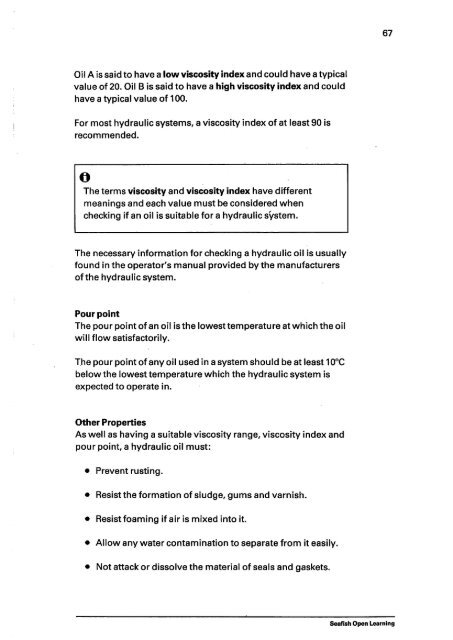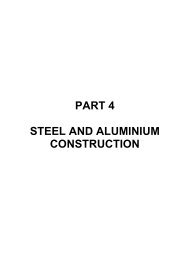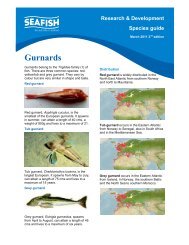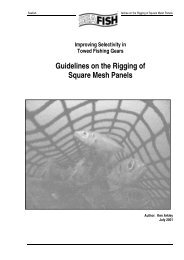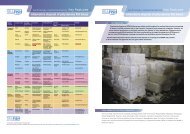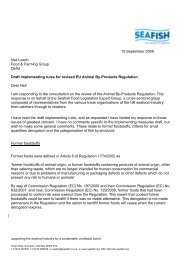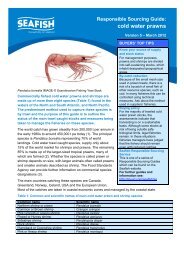Hydraulics - Seafish
Hydraulics - Seafish
Hydraulics - Seafish
You also want an ePaper? Increase the reach of your titles
YUMPU automatically turns print PDFs into web optimized ePapers that Google loves.
67<br />
Oil A is said to have a low viscosity index and could have a typical<br />
value of 20. Oil B is said to have a high viscosity index and could<br />
have a typical value of 100.<br />
For most hydraulic systems, a viscosity index of at least 90 is<br />
recommended.<br />
The terms viscosity and viscosity index have different<br />
meanings and each value must be considered when<br />
checking if an oil is suitable for a hydraulic system.<br />
The necessary information for checking a hydraulic oil is usually<br />
found in the operator's manual provided by the manufacturers<br />
of the hydraulic system.<br />
Pour point<br />
The pour point of an oil is the lowest temperature at which the oil<br />
will flow satisfactorily.<br />
The pour point of any oil used in a system should be at least 10°C<br />
below the lowest temperature which the hydraulic system is<br />
expected to operate in.<br />
Other Properties<br />
As well as having a suitable viscosity range, viscosity index and<br />
pour point, a hydraulic oil must:<br />
• Prevent rusting.<br />
• Resist the formation of sludge, gums and varnish.<br />
• Resist foaming if air is mixed into it.<br />
• Allow any water contamination to separate from it easily.<br />
• Not attack or dissolve the material of seals and gaskets.<br />
<strong>Seafish</strong> Open Learning


